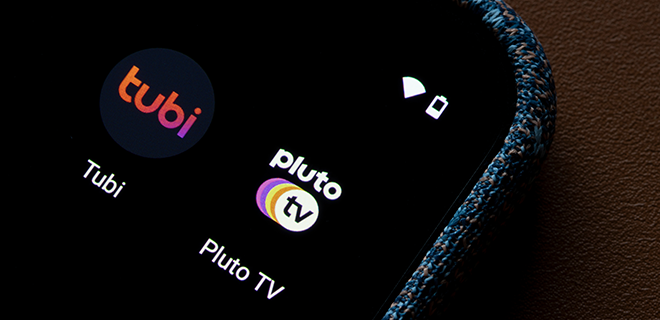
To say we’re living in a golden age of TV is an understatement. Over the past 15 years, we’ve seen a wealth of groundbreaking TV content, and it seems the industry is just getting started.
Today there are over 11,000 TV production businesses in the US (nearly 5% more than in 2022), and TV production is growing nearly 4% each year. On top of that, it’s never been easier for a content creator to spin up a FAST channel.
But building an audience? That’s a whole other matter. One of the biggest challenges facing content producers is making audiences aware of just how much content is available to them for free and from their existing smart TV.
To learn more about FAST and where it fits into the TV landscape, we talked with Ron Gutman, CEO of Wurl, a 25-year veteran of the TV industry. Wurl and Samsung launched the world’s first native FAST channel in 2018, and today Gutman is hoping that over the next five years, cable, satellite, and broadcast providers will have completed their migrations to FAST.
 AdMonsters: What made you decide to launch a new market — FAST?
AdMonsters: What made you decide to launch a new market — FAST?
Ron Gutman: We saw that other major streaming industry players were succeeding with the AVOD/SVOD model, and we realized that the next logical step would be the transition from linear television to streaming.
Technology is often the catalyst for shifts in entertainment consumption, and the consumer clearly wants to consume TV digitally. That meant coming up with technology that allows linear TV providers to launch FAST channels very easily.
In the beginning, there was no monetization, so we needed to reduce the cost of launching television channels on streaming, which was one of our first goals.
AdMonsters: FAST is now five years old … would you call it a mature market now?
RG: Not quite, but we’re getting there. There are three distinct stages to FAST’s growth. The first is moving content to digital so it can be watched on a variety of devices. That stage is complete.
The second stage is monetization so content creators can profit from their content. The digital ad tech sector was able to monetize a lot of the streaming content, which was a big motivation for publishers to migrate. Without advertising to compensate for the reduction in cable viewership, there wouldn’t be a digital option for this content.
The third stage is viewership, and even though more than half of American TV viewers watch FAST today, this stage isn’t complete yet. If we want FAST to become more like cable, we need to increase viewership substantially.
AdMonsters: More than half of TV viewers consume content on FAST platforms today. That sounds like viewership has arrived.
RG: It is a lot, but these households aren’t really availing themselves of what’s available. According to our own insights, most households watch just one or two FAST channels each month, when there are literally thousands available. The variety is unprecedented, but the public isn’t fully aware of what’s available to them for free.
Compare that to the heyday of cable, when people spent a hundred hours or more each month consuming content across 17 channels on average. That’s a huge difference, which is why I think it will be a few more years before that third stage is complete.
AdMonsters: When do you think the public will realize the breadth of content that’s available to them?
RG: I think that within five years viewers will migrate and the transition to FAST will be nearly, if not 100%, complete. The first five years of migration were about recreating the cable experience in the digital world. Over the next five years, we’ll see more digital technologies entering the CTV space and the full migration of viewership will be completed.
AdMonsters: Why should advertisers add FAST to their mix?
RG: Because it’s digital, and that means marketers can run true performance campaigns. They can measure how much they spent on advertising, who was reached, and how many of those viewers visited their website, or made it purchase. When consumers show intent, we can retarget them to drive better results. We never had that capability with traditional TV.
AdMonsters: Can you give me a precise example of a performance campaign that’s run on FAST?
RG: We said earlier that there are thousands upon thousands of FAST channels. If you own one of those channels, a key goal is to get more consumers to discover and view your content. There are millions of households watching FAST content, how do you find which will watch your channel?
This is actually a problem that’s well suited for machine learning. Because we have insights into viewing habits, we can predict what someone is likely to watch even before they realize they want to watch it. These predictions allow us to make really smart recommendations to the right viewer for tune-in campaigns. And we can quantify the payoff: your ad was seen by X number of viewers who then consumed your content either via a CTV app or via a FAST channel.
We can also retarget consumers on a mobile phone while they’re watching TV. Let’s say a consumer watches a lot of sports, but hasn’t tuned into the NFL FAST channel, perhaps because he didn’t realize such a channel exists and that he has access to it. We can retarget that user with an ad, and if he responds, the chances are he will check out the NFL channel. Our insights show that retargeting in the mobile channel while consumers are watching TV most often delivers the strongest conversion rate.
AdMonsters: Isn’t automated content recognition or ACR data supposed to help users discover content that they may like?
RG: Yes, and it does a good job of it. The problem is that it’s platform-specific, and it doesn’t cover all of the streaming apps. If you have a channel, you can’t really tie your content discovery campaign to actual conversions if the viewer watches your content in an app that doesn’t support ACR data.
AdMonsters: You mentioned that machine learning can predict what a viewer wants to watch before he or she even knows it. Have you discovered anything surprising in that data?
RG: Yes, I assumed that affinity drives people’s viewing behavior. If viewers watch many nature shows, I assumed that recommendations for similar or adjacent content would lead to conversions. But, the data show that affinity isn’t as correlated to conversion as assumed. A person’s mood is an important driver. And that leads to an interesting question: how do we measure a viewer’s mood so that we can recommend content they’re likely to watch?
It turns out that real-time viewing behavior can be a window into a viewer’s mood. If they’re switching channels, it’s clear they’re just browsing and a recommendation may lead to a conversion. If they’re watching content that has an uplifting message, they’ll probably watch other content that is also uplifting.
Recency also has a big impact on conversion. If someone just finished watching the news, they’re not likely to want to continue watching the news. People tend to consume content in sequences and patterns. Machine learning is able to identify those patterns and serve up relevant content at scale.
AdMonsters: So M-L will play a key role in completing the viewership stage?
RG. Absolutely. ML-based recommendations will teach viewers that there’s a world of content at their fingertips. They just need to tune in.
###
Ron Gutman is Chief Executive Officer (CEO) at Wurl – the leader in data-driven solutions for Connected TV (CTV). Ron has played an instrumental role in Wurl’s growth, helping navigate the company through streaming’s evolution to usher in the next era of TV. Ron joined Wurl nearly six years ago as Vice President, Broadcast Engineering and was appointed Chief Technology Officer (CTO) in 2018. Before joining Wurl, he was the founder and CTO of Imagine Communications and, prior to that, the Director of Customer Solutions for BigBand Networks.